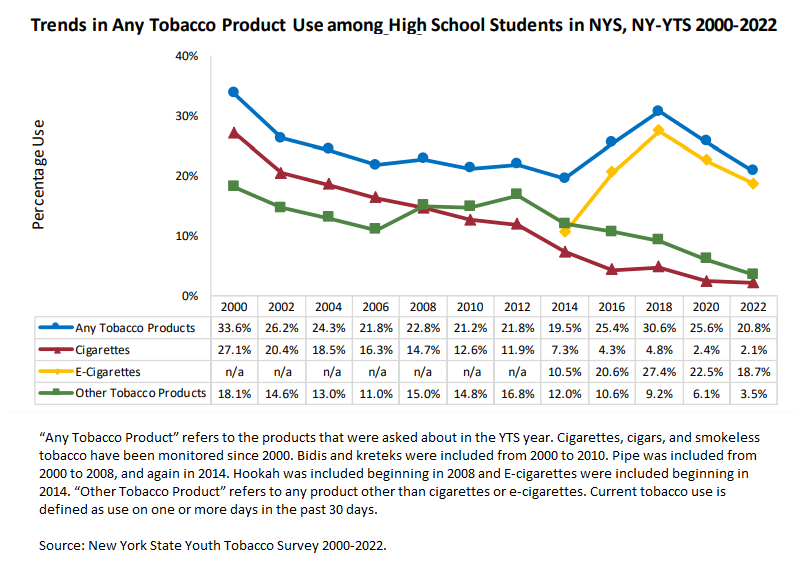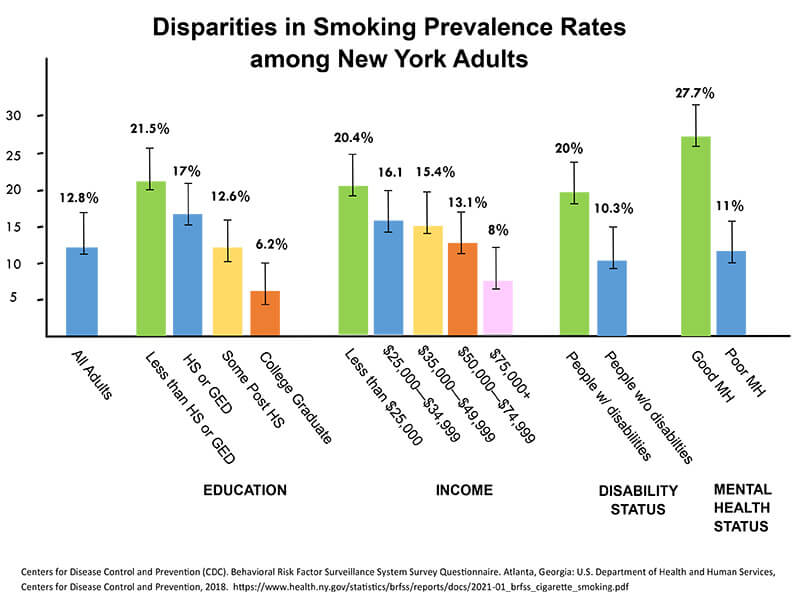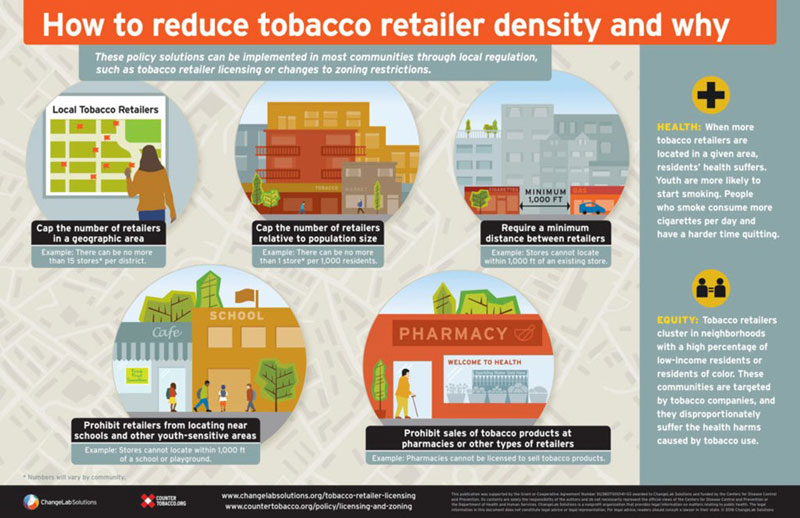Gen Z’ers have never known the ritual of renting a movie at Blockbuster, burning a CD or having to develop film before you can view a photo. Such is the power of technological progress.
New York State Gen Z’ers have also never known the ritual of being asked “Smoking or non-smoking?” upon entering enter a restaurant, nor have they worked a part-time or summer job in a smoke-filled environment. Such is the power of tobacco-control progress.
July 24, 2023, marked the 20th anniversary of New York state’s Clean Indoor Air Act (CIAA), a law that transformed nearly all indoor workplaces, including bars and restaurants, into smoke-free environments and provided protection for all workers from the health consequences associated with secondhand smoke exposure. Improved health for hospitality workers was immediate, with particularly notable reductions in symptoms such as eye, nose and throat irritation. And despite predictions of dire economic consequences for bars and restaurants, these establishments actually experienced an increase in total receipts after the CIAA went into effect.
Since 2003, the CIAA has been expanded to include more indoor and outdoor locations and to prohibit the vaping and smoking of both tobacco and cannabis. Additional tobacco control successes have driven the adult cigarette smoking rate to an all-time low of 12 percent. These include raising the minimum age of sale for tobacco and vape products to 21; ending tobacco sales in pharmacies; ending the sale of all flavored nicotine-based e-cigs, including menthol; and raising the cigarette tax to the highest in the nation.
None of these successes came easily. The CIAA faced strong opposition from business owners worried about the loss of smoking patrons in restaurants and taverns. Ending the sale of flavored nicotine-based vapes experienced significant pushback from vape shop owners. Tobacco-21, the cigarette tax and ending flavored e-cig sales were portrayed by the National Association of Convenience Stores as causing certain financial disaster for small businesses.
Not only did small businesses continue to thrive after these laws went into effect, but youth tobacco use significantly declined. The sky didn’t fall, and thousands of young people have been successfully protected from the myriad harms caused by tobacco use.
Future tobacco control measures will no doubt face similar resistance. Just this past year, New York’s effort to end the sale of all flavored tobacco products, including menthol cigarettes, was defeated. Fortunately, defeat is not a permanent state. We’ll continue to debunk industry claims with facts and evidence showing that ending the sale of all flavored tobacco products will have tremendous positive impact on African Americans and on all youth, saving countless lives and promoting health equity.
The 20th anniversary of CIAA is a moment worth celebrating. We look forward, with the community’s help, to celebrating the implementation of policies that further protect New Yorkers from secondhand smoke exposure and that reduce adult and youth tobacco use rates. Let’s roll up our sleeves. We’ve still got a lot of work to do.








 To the left is a typical tobacco product display. If you don’t use tobacco, you may not even notice, but kids do. Kids see. Kids notice. Kids remember. In fact, kids are more than twice as likely as adults to notice and remember retail tobacco marketing.
To the left is a typical tobacco product display. If you don’t use tobacco, you may not even notice, but kids do. Kids see. Kids notice. Kids remember. In fact, kids are more than twice as likely as adults to notice and remember retail tobacco marketing.